Bloomquist talks weight transfer in a dirt late model; Light at the Eldora Speedway scales
Scott Bloomquist is the most knowledgeable setup guy in the pit area. The stats alone back that up.
Most of the time when there’s a new track on the schedule, Bloomquist usually wins it. The win percentage at new track, is incredible. For example, he was the winner of the inaugural Gateway Dirt Nationals, a new track nobody had been on prior.
It’s no coincidence. That stuff doesn’t just happen over and over.
To be good at a new track, you gotta be good at setting it up at the shop. The notebook and mental notes acquired over decades of winning national series events are what puts him at the front.
But, it goes beyond new tracks. Anytime there’s a curve ball, Bloomquist surfaces to the front. Rain hit Portsmouth Raceway Park for several hours earlier this year. The track crew worked hard on the track all day to pack it in smooth.
Most of the field went out for qualifying and ran the middle of the race track. Bloomquist went out, ran the bottom and set a new track record with a line different from most.
There’s endless situations like that. Which means he’s the prefect guy to discuss setup on a dirt late model…
Scott Bloomquist talks dirt late model lead weight
How much lead weight do you have on your car?
“Right now, none. Usually, I’ll have 50-80 lbs,” Bloomquist told RacingNews.co from Lucas Oil Speedway a few weeks back.
The reason I’m asking you is because you’re one of the bigger guys in the pit area. You have less lead to work with. So, how much of a disadvantage is it that you can’t put lead higher on the car?
“I know that I hear about a lot of guys that don’t have any lead on their car. We build our cars to not have any lead on them. They’re right, with nothing on them.”
“So, that’s in case the scales don’t work at a race track. You can just pull it off and you car’s still right. The deal of ‘on your honor’, that doesn’t work in racing. Your ability to enforce a rule is what determines if there’s a rule or not.”
“So, if there’s no scales, there’s no weight rule. But, I weigh 230 and our cars are known to be a little bit lighter. I don’t know why. They’re just known to be 20-30-40 lbs maybe lighter. Overall, some things we’re doing a little different, I don’t know.”
“But, it is a slight disadvantage. That’s why World of Outlaws and the Lucas Oil Series upped the weight rule 50 lbs 2 years ago.”
“That’s because of the fire extinguishers, the seats and the left side door plate. Those three things add quite a bit of weight, about that 50 lb mark they set. But, UMP has always been that weight.”
Dirt late model racing saw a required fire suppression system added to all cars on the national tour. A bottle of fluid sits mounted on the car, in the case of fire it automatically discharges.
The drivers side door is now fitted with a thick piece of steel. That is to prevent puncture into the driver’s compartment.

Dirt racing weight transfer
Honestly, this is something I learned within the last year. In most forms of racing, you want lead to be mounted as low as possible, it’s just universal. The lower center of gravity makes asphalt cars of all kinds, handle better.
That’s not the case in dirt racing. The higher you mount the lead, the quicker the car rolls over onto the right side going into a corner.
The idea of placing lead higher on a dirt car is something I recently learned. Because of the transfer. But, which tracks would you want that?
“Short tracks. Real slick race tracks. A fast track like Eldora, not necessarily.”
Is that because of the banking too. Or is it just speed?
“It’s all determined by speed. If you get it way too high, it will carry you out of the race track.”
Lift the left sides you mean?
“Yeah. There’s a fine line in the angle. Your speed determines your g-forces.”
“With your g-forces, there’s an imaginary line that runs through the car. It changes at each particular track. With that line, anything you get above it, will carry you out of the track instead of planting the right rear tire.”

When you mount lead higher on the car. Is it more about it transferring quicker, or is it that it keeps it there longer?
“Well, for example, a friend of mine in the 1960’s, ran the stock class and they had Camaros. The rear end of a Camaro — The bumper was so close to the rear end that they didn’t have any rear weight and couldn’t hardly get any transfer.”
“In all those old, long sleds, they moved the axle way forward. Did all kinda stuff to get transfer.”
“Well, in the stock class, you’re not allowed to do anything to the car. But, he took his headliner out and lined it with lead, in the roof. He put his headliner back in and his Camaro would do wheel stands. He won all the time.”
“If you put a 10′ pole in the center of the car and mounted 100 lbs on it, you’d flip. So, the height of weight is extremely important.”
Light at Eldora Speedway scales
When I first opened this interview, Bloomquist thought I was talking about the ‘no green light’ situation in the Dirt Late Model Dream.
Back in June, a rain shower hit during green flag racing of the heat race. Bloomquist was leading, he and the rest of the field went into turn one and wrecked due to the sudden shower.
Officials elected to restart the race before the last restart that wiped out the entire field. Crew members from the teams of Ricky Weiss, Dale McDowell and others went to work on the Bloomquist machine.
They thrashed to get it back together after smacking the outside concrete wall. Eldora Speedway officials ran the next heat race to give the entire field time to work on the cars, but that’s all the time they had, the time it took to run one heat race.
With the car put back together, Bloomquist drove off to win heat five upon the restart. That was going to put him on the front row for the $125,000 to win main event.
However, he was light 1-3 lbs at the scales. Bloomquist began shaking the front wheels and the light bounced between green and red.
Officials elected to disqualify the heat race winner. He was sent to the tail of the LCQ but failed to transfer into the main event.
Related: Rain falls during heat race at Eldora Speedway; They all crash (Video)
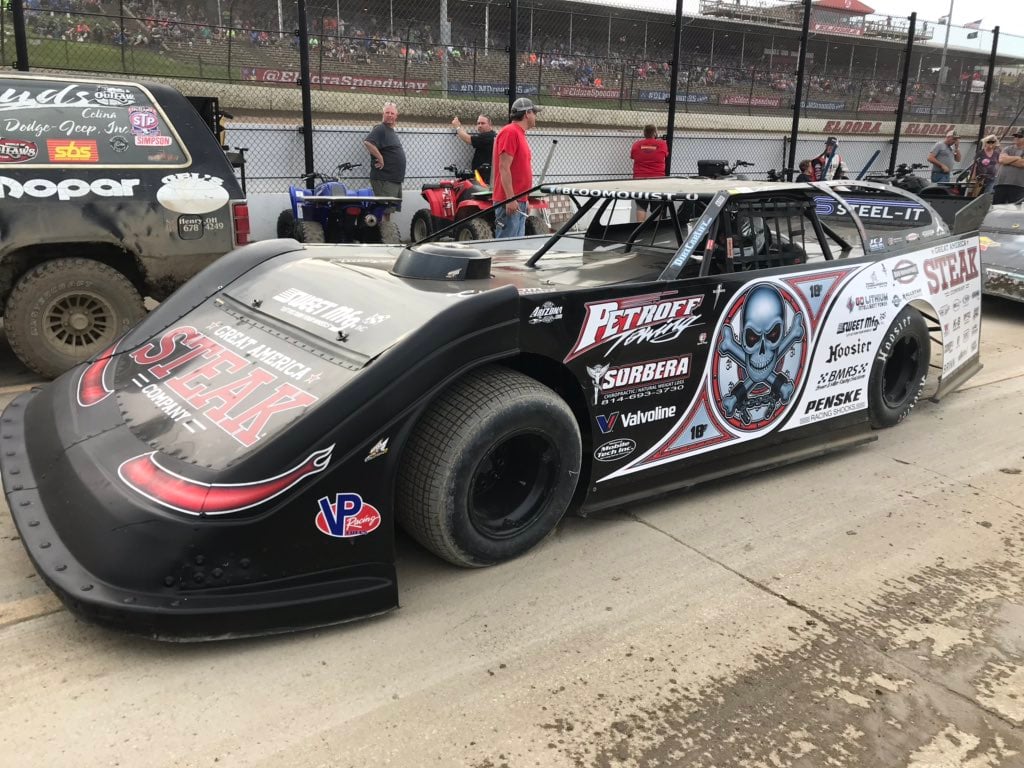
Scott Bloomquist talks being light at Eldora Speedway scales
“That was a heartbreak. I had new help. They lost the fuel stick. I told them were I needed the fuel. It had five less in it than it should have had.”
“I had been putting a piece of lead on, for the heat races, after qualifying, every day. It weighed 26 lbs and it didn’t get put on.”
“I had been 50 lbs over in the previous two nights after the heat races. We were 1 lb short, 2 lbs is where it ended up settling.”
“After that wreck, coming in and working on the car, it’s hard for me to believe. There was mud around the bottom. I didn’t even think anything like that because I’d been 50 lbs over each night.”
“I mean, really for the green light to flash on, a couple of times. And to be 1-2 lbs short… There’s not any scale in the world that they don’t give just a little tolerance for error,” Bloomquist concluded.
More
Rain falls during heat race at Eldora Speedway; They all crash (Video)
Dirt Late Model Dream Results: June 8, 2019
Rain racing for dirt late models?
Scott Bloomquist involved in motor cycle accident
Scott Bloomquist tells the fascinating story of the #0
Bloomquist comments on bullrings and big tracks
Links
Scott Bloomquist | Eldora Speedway
Related
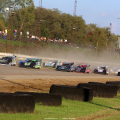 Dirt late model safety has added weight; Teams now have less lead weight to move around
Dirt late model safety has added weight; Teams now have less lead weight to move around
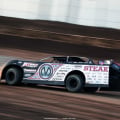 Chris Madden departs Scott Bloomquist Racing
Chris Madden departs Scott Bloomquist Racing
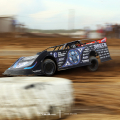 Scott Bloomquist is expected to undergo shoulder surgery this week; Pulls himself from seat
Scott Bloomquist is expected to undergo shoulder surgery this week; Pulls himself from seat
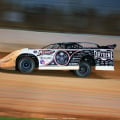 Scott Bloomquist to run primary events in 2021; Dropping World of Outlaws tour
Scott Bloomquist to run primary events in 2021; Dropping World of Outlaws tour